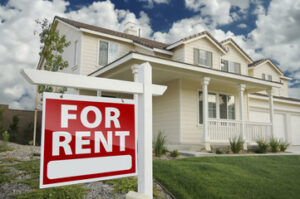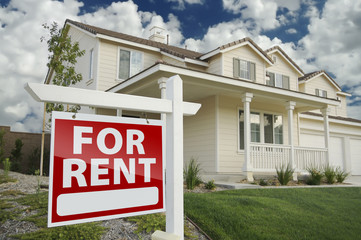You can find rental homes through home listing websites. These sites let you filter homes based on several criteria, including location and amenities. These websites also feature a map view, which helps you narrow down your search area. Some of these websites also allow you to search for vacation rentals. Check out Rental Homes Near Fort Bragg NC to learn more.
 One of the most important things to look for in a rental home is its location. A good location will help you attract more tenants and charge a higher rent. Tenants want to live in a safe neighborhood and be close to work, schools, restaurants, and community parks. A home’s location can be determined by looking at the rental listings on the online property listing sites, such as Zillow and Craigslist. These websites allow you to search for rental homes based on your criteria, such as price range and number of bedrooms and bathrooms. Some sites also let you filter for amenities like a washer, dryer, or balcony.
One of the most important things to look for in a rental home is its location. A good location will help you attract more tenants and charge a higher rent. Tenants want to live in a safe neighborhood and be close to work, schools, restaurants, and community parks. A home’s location can be determined by looking at the rental listings on the online property listing sites, such as Zillow and Craigslist. These websites allow you to search for rental homes based on your criteria, such as price range and number of bedrooms and bathrooms. Some sites also let you filter for amenities like a washer, dryer, or balcony.
You can also find a local real estate agent specializing in rentals to assist you with your search. They can guide you through the listings and ensure that the home is in a desirable area. They can also help you understand the local market conditions and demographics, so you can make an informed decision about whether to purchase or rent a property. They can also help you navigate the process of submitting an application to avoid any delays.
The amenities available at your rental property can make or break a potential tenant’s decision to sign a lease with you. If your property has a pool, a dog-friendly policy, or a spacious backyard, you’ll be more likely to attract renters with a variety of lifestyle needs. These tenants are more likely to pay a premium rent, which will help you earn a higher return on your investment.
Choosing a location is also crucial for a rental home, as it will determine how many tenants you can get and what your rent will be. You can find out about an area’s reputation by checking local crime statistics and looking at its demographics. The better the neighborhood, the more desirable it will be for tenants, so you’ll be able to command a higher rent.
You should also look at the average prices for rent and vacancy rates in the area, which will affect your bottom line. If the area has a high vacancy rate, you might not be able to rent it out for enough money to cover your mortgage and expenses. In addition, you must consider the condition of your rental. If it has an outdated kitchen or a broken heating system, you might need to make significant renovations before it’s ready to rent out.
If you’re a landlord, you should try to appeal to millennials and Gen Zers by offering amenities that match their unique lifestyles. This way, you’ll increase your chances of attracting quality tenants and minimizing the risk of turnover. Some of the more popular apartment amenities include outdoor lounges and coworking spaces. These features are great for attracting young tenants and increasing your income.
It is important to have a good grasp of your finances and track all of your expenses. This can be done by calculating how much you earn, spending, and saving. It is also important to consider upfront costs, such as a security deposit and mortgage insurance. These costs are not repeating monthly expenses, but they should be factored into the overall rental budget.
If you are considering purchasing a rental property, it is important to understand the local market and how it will affect your revenue. For example, if the neighborhood is safe and sought-after, you will be able to rent the property faster and more easily. You should also look at rental statistics for the area and check how popular it is.
There are millions of rentals available, including homes, apartments, and condos. The key is to find a property that fits your budget, is in a safe location, and has the amenities and features you want. It is also important to remember that it is not always necessary to purchase a house – there are plenty of other great options, such as duplexes and townhouses. A good way to narrow down your search is to use a website that allows you to filter by these factors.
A lease or rental agreement should clearly state the term of tenancy. It should also describe the space that will be rented, including any storage areas or parking spaces. Likewise, it should also specify any areas that will not be rented (such as the backyard or basement). If the landlord has any legal non-returnable fees (a security deposit is a common example), these should be listed, along with their maximum amount. Landlords should also include any charges that may be applied if rent payments are made late or checks bounce.
Some states and municipalities have their own rental laws, so be sure to review them before creating your lease or rental agreement. For instance, some have a minimum amount of time that a lease can last, and others define what types of repairs or maintenance a landlord must do on the property. It’s also important to note any utilities that the tenant will be responsible for, such as gas and water.
For tenants, the main advantage of a lease is that it provides stability. It sets a fixed rent cost for the duration of the contract. However, this can be a disadvantage in up-and-coming neighborhoods that see consistently growing property values, since the owner may miss out on incremental income over the course of a year.
When choosing the length of a lease, remember that it can be difficult to break a lease without significant costs and disruptions. It can also be expensive for a landlord to advertise, screen, and clean up after each tenant moves out. Thoroughly vetting applicants can help reduce these costs by ensuring that the people who will be living in the home are financially and personally responsible. This can be done using a comprehensive tenant screening service like TransUnion SmartMove, which includes a credit report, criminal record search, eviction history, Income Insights and ResidentScore reports.
The inspections needed for rental properties are an important part of ensuring that the property is maintained in good condition. It is also a way of ensuring that tenants are taking care of the property and reporting any issues promptly. This will help the landlord avoid costly repairs in the future and keep the tenant happy.
Performing routine inspections of the interior and exterior of your rental property is an important step in managing your investment. This will allow you to find any problems that may need to be fixed before they become serious and potentially lead to a vacancy or legal issue. Typically, it is best to perform an inspection before a new tenant moves in and again when the lease expires.
Another important aspect of an inspection is checking for any damage that may have been caused by previous tenants. It is important to be able to document any damages so that you can account for them when calculating security deposit deductions. For example, you should note whether the dishwasher was broken or if any appliances were stolen. You can also check the condition of the interior, including paint and wallpaper, furniture, fixtures, and electrical outlets.
You should also conduct a drive-by inspection to make sure that the exterior of the property is in good condition. This type of inspection doesn’t require advance notice and can be done quickly without disturbing the tenants. This can be useful for checking things that aren’t easily spotted, such as a flaking paint or a musty smell. It can also be useful for checking on the status of a lawn, such as if it’s been mowed or if there are any leaves piled up in the gutters.

